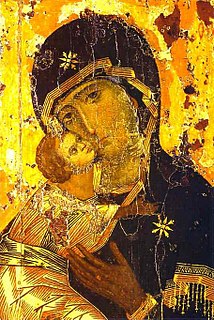 W
WIn religion, a relic is an object or article of religious significance from the past, it usually consists of the physical remains of a saint or the personal effects of the saint or venerated person preserved for purposes of veneration as a tangible memorial. Relics are an important aspect of some forms of Buddhism, Christianity, Islam, Shamanism, and many other religions. Relic derives from the Latin reliquiae, meaning "remains", and a form of the Latin verb relinquere, to "leave behind, or abandon". A reliquary is a shrine that houses one or more religious relics.
 W
WThe Agate Bowl is a hardstone carving in the shape of a bowl cut out of a single piece of agate, possibly in the fourth century at the court of Constantine, and now displayed in the Imperial Treasury at the Hofburg Palace in Vienna, Austria. For centuries it was widely regarded as the "greatest masterpiece" and the "best and most important piece" in the collection. In 1564, Holy Roman Emperor Maximillian II and his brothers declared it by deed to be an "inalienable heirloom of the house of Austria". They valued this ancient precious stone carving, not just for its craftsmanship, but for a "natural miracle" in the stone itself that reveals a mysterious inscription—the name XRISTO (Christ) at the bottom of the bowl within the grain of the stone. It is now generally believed that the inscription inspired the legend that the bowl was the Holy Grail. The Agate Bowl is the largest carved stone bowl in the world.
 W
WThe Ark of the Covenant, is the most sacred relic of the Israelites. It consisted of a pure gold-covered wooden chest with an elaborate lid called the Mercy seat. The Ark is described in the Book of Exodus as containing the two stone tablets of the Ten Commandments. According to New Testament Book of Hebrews, it also contained Aaron's rod and a pot of manna.
 W
WThe Cloak of Muhammad (Kherqa) is a relic located in the Kirka Sharif in Kandahar, Afghanistan. It is a cloak believed to have been worn by the Islamic prophet Muhammad during the famous Night Journey in 621 CE.
 W
WHırka-i Şerif Mosque is a historic mosque in Istanbul, Turkey. It takes its name from a relic, the mantle of Muhammad, which is preserved in the mosque.
 W
WThis article lists the purported relics of major figures of religious traditions and burial places of founders of world religions. If there is no burial place or relics, the place of death is mentioned.
 W
WTraditionally, Islam has had a rich history of the veneration of relics, especially of those attributed to the Islamic prophet Muhammad. There exists historical evidence that some of the earliest Muslims practised the veneration of relics, and the practice continued to remain popular in many parts of the Sunni Islamic world until the eighteenth-century, when the reform movements of Salafism and Wahhabism began to staunchly condemn such practices due to their linking it with the sin of shirk (idolatry). As a result of the influence of these perspectives, some contemporary Muslims influenced by these ideologies have rejected the traditional practice of relic-veneration altogether. The most genuine prophetic relics are believed to be those housed in Istanbul's Topkapı Palace, in a section known as Hirkai Serif Odasi.
 W
WA palladium or palladion is an image or other object of great antiquity on which the safety of a city or nation is said to depend. The word is a generalization from the name of the original Trojan Palladium, a wooden statue (xoanon) of Pallas Athena that Odysseus and Diomedes stole from the citadel of Troy and which was supposedly later taken to the future site of Rome by Aeneas, where it remained until perhaps transferred to Constantinople and lost sight of after the conversion of the Empire to Christianity.
 W
WThe Islamic Sacred Relics, also known as the Holy Relics, known collectively as the Sacred Trust, consist of religious pieces sent to the Ottoman Sultans between the 16th century to the late 19th century.
 W
WSeal of Muhammad is one of the relics of Muhammad kept in the Topkapı Palace by the Ottoman Sultans as part of the Sacred Relics collection.
 W
WUrumqi Confucius Temple, or Urumqi Confucian Temple, is a Confucian temple located at No. 15, north side of Qianjin Road (前进路), Tianshan District, Urumqi City, Xinjiang Uygur Autonomous Region.